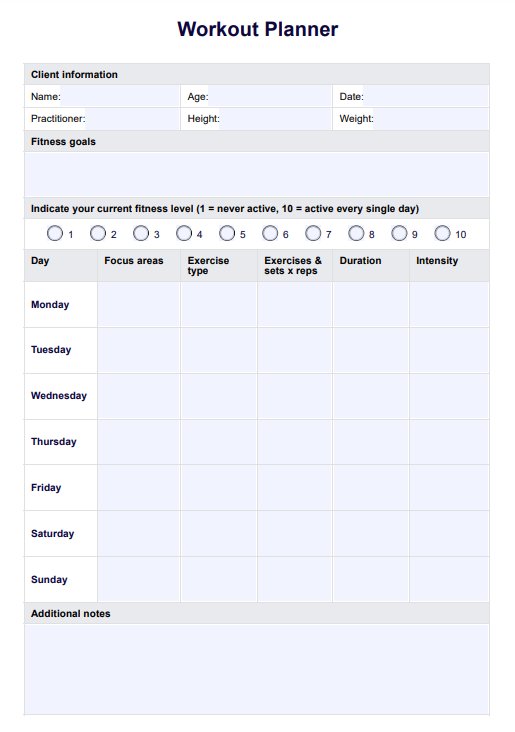A Workout Planner includes sections for personal information, fitness goals, and a detailed workout plan with exercises, sets, reps, and notes. It also provides space for healthcare professional input and additional recommendations to ensure a tailored fitness approach.

Workout Planner
Utilize this free Workout Planner to support your clients in planning their workouts for effective change and motivation in their lives.
Workout Planner Template
Commonly asked questions
The ideal workout frequency depends on fitness goals, intensity, and experience, but most individuals benefit from exercising 3–5 times per week. This allows for balanced recovery while targeting different muscle groups effectively.
An effective workout plan focuses on clear goals, progressive overload, and proper balance across muscle groups. As a healthcare practitioner, it may also help incorporate variety and adaptability to maintain motivation and track progress.
EHR and practice management software
Get started for free
*No credit card required
Free
$0/usd
Unlimited clients
Telehealth
1GB of storage
Client portal text
Automated billing and online payments











